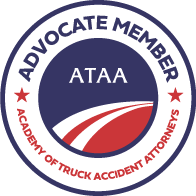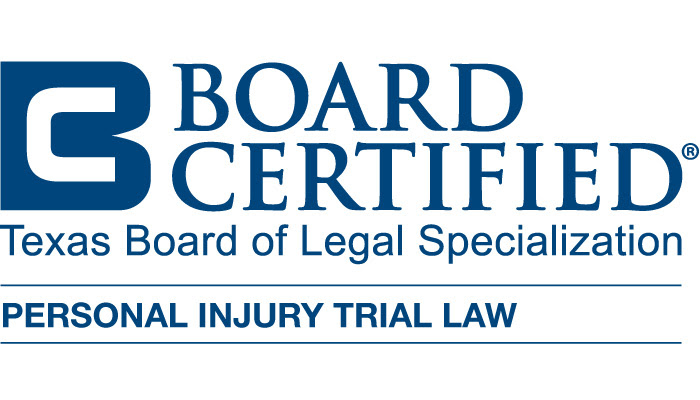From catastrophic injuries to tragic loss of life, the consequences of cement truck accidents can be profound and far-reaching.
In this blog post, we’ll explore the unique challenges posed by cement truck accidents, the common causes behind them, and what you need to know if you or a loved one have been affected by such an incident. Whether you’re a victim seeking justice or simply seeking to understand your rights and legal options, we’re here to provide clarity and guidance.


What is a Cement Truck?
A cement truck, also known as a concrete mixer truck, is a specialized vehicle designed for transporting and mixing concrete to construction sites. These trucks are equipped with a rotating drum, typically mounted on the rear, which continuously mixes the concrete during transportation to maintain its consistency.
Utility and Functionality
Cement trucks play a pivotal role in the construction process by ensuring that concrete, a fundamental building material, reaches its destination ready for immediate use. They are commonly employed in projects ranging from residential buildings and commercial developments to infrastructure projects like roads and bridges.
Unlike other trucks commonly seen on the road, such as semi-trailers or delivery trucks, cement trucks are easily recognizable by their distinctive drum design and often vibrant color schemes. Their purpose-built nature and specialized equipment set them apart from their counterparts.
Some Cement Truck Stats
Cement trucks are massive vehicles, integral to construction sites across the globe. On average, these behemoths stretch between 30 to 35 feet in length, depending on the model and the capacity of their mixing drums. They tower impressively at 12 to 13 feet tall, dwarfing many other vehicles on the road. A fully loaded cement truck can weigh anywhere from 20,000 to 33,000 pounds, roughly translating to about 11,340 to 15,875 kilograms. Some of the larger models might even surpass these weights, potentially reaching up to 40,000 pounds when fully laden with cement.
When it comes to their pace on the road, cement trucks maintain speeds similar to other commercial vehicles. They typically travel at 55 to 65 miles per hour on highways—equivalent to about 88 to 105 kilometers per hour. However, their speed decreases significantly in more congested urban environments, navigating the streets more cautiously due to their immense size and weight.
Cement Truck Safety
It’s crucial for drivers to exercise caution when sharing the road with cement trucks, maintaining a safe distance and avoiding sudden maneuvers that could impede their operation. Likewise, operators of cement trucks must adhere to strict safety protocols to mitigate the risk of accidents and ensure the safe delivery of concrete to construction sites.
Understanding Cement Truck Accidents
When a cement truck is involved in an accident, the outcomes can range from property damage to serious injuries and loss of life. These accidents often occur due to a combination of factors, including human error, equipment failure, and external conditions such as weather and road conditions.
Factors Contributing to Cement Truck Accidents
The factors that contribute to cement truck accidents are multifaceted and deeply linked to the unique characteristics of these vehicles. The size and weight of cement trucks distinguish them greatly from standard passenger vehicles, presenting significant challenges in terms of maneuverability and braking, particularly in urgent situations. The massive weight of these trucks means that any collision is likely to involve substantial force and impact, amplifying the potential for damage and injury.
Additionally, the design of cement trucks, with a rotating drum at the rear, affects their center of gravity. When this drum is loaded with concrete, it shifts the truck’s balance, making it prone to rollovers or loss of control during abrupt turns or sudden movements.
Another critical issue is visibility. Cement trucks, similar to other large commercial vehicles, possess extensive blind spots on their sides and rear. These blind spots make it difficult for drivers to detect pedestrians, cyclists, or smaller vehicles, thereby heightening the risk of accidents.
The nature of the truck’s cargo—concrete—introduces further hazards. In cases of a spill or leak, the wet concrete can create slick surfaces, compromising traction and control not just for the cement truck but for other vehicles as well, leading to dangerous driving conditions.
Distinguishing Features of Cement Truck Accidents
Cement truck accidents possess unique characteristics that set them apart from typical vehicular incidents. One of the distinguishing features is the potential for cargo spillage. In such events, concrete may spill onto the roadway, presenting hazards to other road users and necessitating specialized cleanup efforts. These efforts are crucial not only to ensure the safety of the roadway but also to minimize environmental impacts.
Furthermore, cement trucks are bound by strict regulations that cover their operation, maintenance, and overall safety standards. Adhering to these regulations is vital to prevent accidents and reduce the risk of injuries to drivers, passengers, and bystanders alike. Compliance serves as a critical component in safeguarding all parties involved and maintaining public safety on the roads.
Related Videos
Choosing a Personal Injury Attorney
Types of Compensation in a Truck Accident Claim
Determining Liability in a Cement Truck Accident
In the intricate and often challenging realm of cement truck accidents, the question of liability often extends to multiple parties, each potentially bearing a share of responsibility for the incident. At the forefront is the cement truck driver, who may be found liable if their negligence or reckless actions—such as speeding, driving while distracted, or operating the vehicle under the influence—contributed to the accident.
The trucking company that owns or operates the cement truck also faces potential liability. This can arise if the company neglected to maintain the truck properly, failed to provide adequate training for its drivers, or did not enforce essential safety protocols. Furthermore, the construction firm involved in the project receiving the concrete supply might be implicated. Liability for the construction firm could stem from a failure to coordinate concrete deliveries effectively, leading to hazardous conditions on the site or surrounding roads.
Additionally, the manufacturers of the cement truck or its components might be held accountable if a defect in the design or manufacturing process played a role in the accident. In such cases, the manufacturer could be liable for damages stemming from these defects, rounding out the spectrum of parties who might share in the liability of a cement truck accident.
Complex Regulatory Framework
Cement trucks are subject to a complex regulatory framework governing their operation, maintenance, and safety standards. These regulations are designed to ensure the safe operation of commercial vehicles and protect the public from harm. Violations of these regulations can serve as evidence of negligence in a personal injury case.
Specialized Investigation
Specialized investigations are often essential for successfully litigating personal injury cases, particularly those involving cement truck accidents. Such investigations typically commence with a detailed examination of the accident scene. This includes collecting witness statements, reconstructing the accident, and scrutinizing the cement truck’s maintenance and operational records.
To build a robust case, it is also crucial to consult with experts in various fields. These experts might specialize in accident reconstruction, engineering, and trucking regulations, all of which can provide vital insights into the circumstances of the accident.
The process also involves navigating the intricate web of insurance coverage and engaging in negotiations with multiple stakeholders to ensure the victim receives fair compensation for their injuries and damages. Cement truck accidents pose unique challenges in establishing liability and securing adequate compensation. However, with the guidance of an experienced personal injury lawyer who is well-versed in these complex cases, victims have the opportunity to pursue justice and hold the responsible parties accountable for their actions.
My focus is to give a voice to families who have suffered a wrongful death or a serious injury to a family member caused by an 18-Wheeler, commercial truck, or a drunk driver. Contact us today, we can help you.Helping Injury Victims for Over 25 Years
The Essential Elements of a Personal Injury Lawsuit
In the complex landscape of personal injury law, understanding the foundational elements required for a successful lawsuit is crucial, regardless of whether the incident involved a cement truck accident or another scenario where negligence seems to have played a role. Here’s a concise exploration of what these cases entail:
The first cornerstone is the Duty of Care. In any personal injury lawsuit, it is imperative to establish that the defendant had a legal obligation to act with reasonable care towards the plaintiff. This obligation, which can vary depending on the situation, essentially means taking appropriate measures to avoid causing harm to others.
Next, there is the Breach of Duty. Once it’s confirmed that the defendant owed a duty of care, the plaintiff must prove that the defendant failed to fulfill this duty through negligent or wrongful actions. Examples of such breaches could include reckless driving, neglect in maintaining safe premises, or errors in medical treatment.
Causation also plays a pivotal role. The plaintiff is required to show that their injuries or damages were a direct consequence of the defendant’s actions or inaction. Establishing this connection involves demonstrating that the harm was indeed a result of the breach of duty, and not due to unrelated factors.
Finally, the plaintiff must detail the Damages incurred. This encompasses the physical injuries, emotional distress, and financial losses suffered as a result of the defendant’s negligence or misconduct. Demonstrating these damages is essential to substantiate the claim and justify the compensation sought.
Navigating these elements can be daunting, but they are essential in proving a personal injury claim and securing justice for the wrongs endured.
Types of Damages Awarded in Personal Injury Cases
In personal injury cases, two main types of damages can be awarded: economic and non-economic damages, each serving a distinct purpose in compensating the injured party.
Economic damages aim to provide financial restitution for tangible losses stemming from the accident. This includes medical expenses, covering both current and future treatment like hospital stays, surgeries, medications, and ongoing rehabilitation and therapy. Compensation also extends to lost income, reimbursing the injured for wages lost during their recovery period and for any reduced earning capacity that may affect their future work potential. Additionally, economic damages cover costs related to property damage, ensuring the plaintiff is compensated for any harm to their vehicle or personal belongings due to the accident.
Non-economic damages, on the other hand, address more subjective and intangible losses. These are not as easily quantifiable but are crucial for the injured party’s emotional and psychological healing. This category includes compensation for loss of enjoyment of life, reflecting the diminished ability to engage in activities and hobbies once enjoyed. Loss of consortium is another aspect, providing damages to a spouse or family members for the loss of companionship and support. Emotional distress is also recognized, with compensation provided for psychological impacts like anxiety, depression, or PTSD that arise from the ordeal.
In instances where the defendant’s behavior is particularly egregious, punitive damages may be awarded. These are not aimed at compensating the plaintiff but are instead intended to punish the defendant and deter similar future misconduct. Punitive damages underscore the justice system’s role in addressing and rectifying severe wrongdoing, reinforcing societal norms against such behavior.
Getting the Justice You Deserve
From the unique challenges of determining liability to the devastating impact on victims and their families, cement truck accidents demand the attention and experience of seasoned legal professionals.
At Willumsen Law Firm, we understand the intricacies of personal injury law in Texas, and we’re committed to advocating for the rights of accident victims. If you or a loved one have been injured in a cement truck accident or any other type of vehicular collision, we’re here to help.
Our team is ready to provide you with personalized legal guidance and support every step of the way. From conducting thorough investigations to negotiating with insurance companies and pursuing the compensation you deserve, we’ll work tirelessly to ensure that your rights are protected and your voice is heard.
Don’t wait to take action. If you believe you have a case related to a cement truck accident or any other vehicular incident, contact Willumsen Law Firm today for a confidential consultation. Together, we can hold accountable those responsible for your injuries and work towards a brighter, more just future.
Remember, you don’t have to face this challenge alone. Let us be your advocates for justice and recovery. Contact Willumsen Law Firm today, and let’s start fighting for the justice you deserve.



